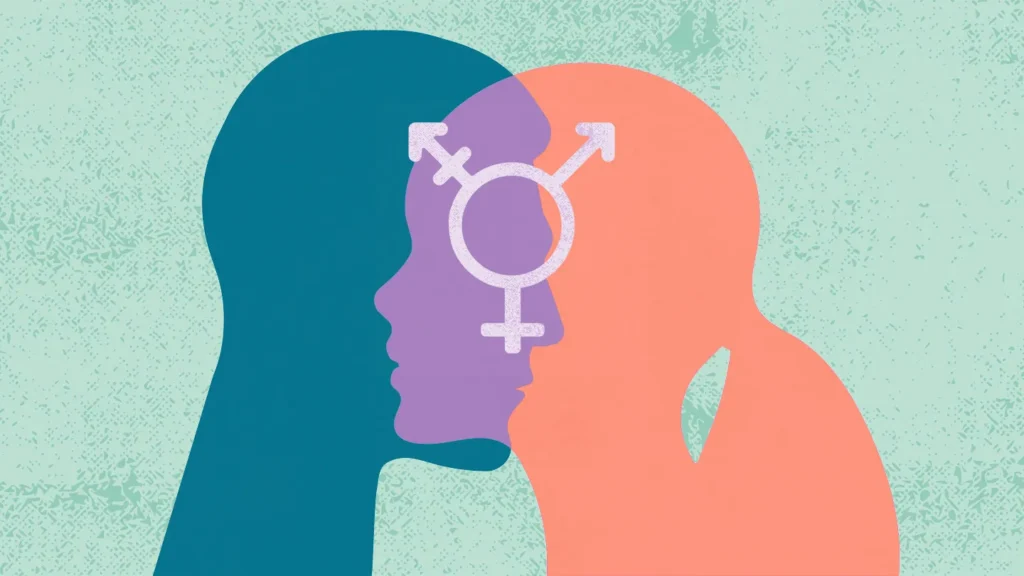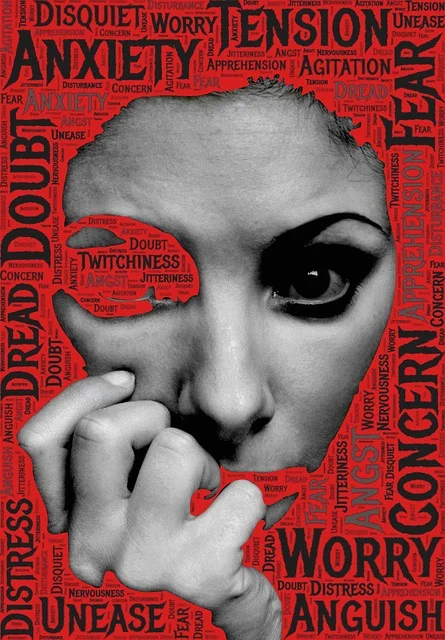Introduction – Understanding Gender Identity and Dysphoria
Gender identity is one of the most personal and powerful parts of who we are. It describes how we see ourselves — male, female, both, neither, or somewhere in between. For most people, gender identity aligns with the sex assigned at birth. But for some, this alignment feels profoundly wrong, creating a sense of inner conflict and discomfort. This deep distress is known as gender dysphoria.

Gender dysphoria is more than confusion or curiosity about gender. It is a recognized psychological condition where an individual experiences significant emotional pain because their gender identity does not match their assigned sex at birth. The distress can affect mental health, self-esteem, and daily life.
Understanding gender dysphoria is vital in modern society. With growing awareness and acceptance of gender diversity, families, educators, and healthcare providers are learning to approach this topic with empathy, respect, and authenticity. This article explores what gender dysphoria really is, how it develops in children and adolescents, how it feels, and the treatment and support options available — grounded in authentic DSM-5 material and human experience.
What Is Gender Dysphoria?
According to the Diagnostic and Statistical Manual of Mental Disorders, Fifth Edition (DSM-5), gender dysphoria refers to the psychological distress that results from an incongruence between a person’s assigned gender at birth and their true gender identity.
It is important to note that gender dysphoria is not the same as being transgender. Being transgender describes a person’s identity; gender dysphoria describes the emotional distress that may accompany that identity mismatch. Not all transgender people experience dysphoria, and not everyone with dysphoria identifies as transgender.
DSM-5 Criteria
The DSM-5 lists several criteria for diagnosing gender dysphoria, including:
- A marked incongruence between one’s experienced gender and primary or secondary sex characteristics.
- A strong desire to be treated as another gender or to be rid of one’s sex characteristics.
- Persistent discomfort lasting at least six months.
- Significant distress or impairment in social, occupational, or other areas of life.
This condition can appear in children, adolescents, or adults. The core feature is distress, not simply gender nonconformity or preference for clothing, activities, or behaviors associated with another gender.
Dispelling Myths
- Myth: Gender dysphoria is a “phase.”
Fact: While exploration is natural, persistent distress over gender incongruence often reflects genuine gender dysphoria. - Myth: It is caused by bad parenting or trauma.
Fact: There is no evidence that upbringing causes gender dysphoria. It is understood as a complex interaction of biological, psychological, and social factors. - Myth: It can be “cured” by changing someone’s mind.
Fact: Attempts to suppress or “convert” gender identity are harmful and unethical. Treatment focuses on affirming and supporting identity, not erasing it.
Gender Dysphoria in Children and Adolescents
Early Gender Awareness
Gender identity begins forming in early childhood. By age three, most children can label themselves as boys or girls. For some, this sense of identity doesn’t match the sex assigned at birth. They may express a desire to be another gender, reject traditional gender roles, or prefer clothes, toys, or friends of another gender.
While many children explore gender expression, only a small portion experience persistent and intense discomfort — this is when gender dysphoria may be present.
Recognizing the Signs
Signs of gender dysphoria in children may include:
- Consistent statements like “I am not a boy/girl” or “I want to be a boy/girl.”
- Strong dislike of one’s physical anatomy.
- Preferring clothing or hairstyles associated with another gender.
- Avoidance of activities typical for their assigned gender.
- Emotional distress or anxiety related to their body or pronouns.
For adolescents, these feelings may intensify with puberty. Physical changes like menstruation or voice deepening can trigger severe distress, anxiety, or depression.
Parental Support and Understanding
Children and teens facing gender dysphoria need validation and safety — not pressure or correction. Parents play a crucial role by listening without judgment, using the child’s chosen name and pronouns, and seeking guidance from qualified professionals.
Professional organizations like the American Academy of Pediatrics recommend gender-affirming approaches that focus on emotional well-being, self-acceptance, and appropriate medical care when necessary.
The Role of Schools and Counselors
Schools can provide affirming environments through inclusive policies, gender-neutral restrooms, and respect for chosen names and pronouns. Counselors trained in gender diversity can help children navigate identity development and build resilience against bullying and stigma.
Controversies and Ethics
Treatment for minors can be emotionally charged and debated. However, ethical guidelines emphasize that early support and acceptance greatly reduce risks of depression, anxiety, and suicide. The goal is not to rush medical intervention but to support the child’s sense of self while they grow and understand their identity.
How Do You Know If You Have Gender Dysphoria?
Self-awareness can take years to develop. Many individuals report “knowing something feels off” long before they can label it.
Common Emotional and Behavioral Indicators
You might experience gender dysphoria if you:
- Feel persistent discomfort or distress with your physical sex characteristics.
- Have a strong desire to be recognized as another gender.
- Experience depression, anxiety, or low self-esteem related to your body.
- Avoid social situations because of fear of being misgendered.
- Feel deep emotional pain when forced to conform to a gender role that feels wrong.
Diagnosis and Assessment
A qualified mental health professional — usually a psychologist or psychiatrist — conducts assessments through interviews, questionnaires, and observation. The diagnosis focuses on emotional distress and impairment, not identity itself.
The process is confidential, compassionate, and guided by standards like the WPATH (World Professional Association for Transgender Health) guidelines.
Self-Reflection Matters
Some people recognize dysphoria in subtle ways. They might feel relief when referred to by another gender or discomfort during puberty. Journaling, support groups, and speaking with affirming professionals can help clarify these feelings.
Recognizing gender dysphoria is not about labeling yourself — it’s about understanding your emotions, accepting your truth, and seeking support that fosters peace and self-compassion.
What Does Gender Dysphoria Feel Like?
Gender dysphoria feels different for everyone, but it often involves a deep internal struggle between who you are and what the world sees.
Emotional Experiences
Many describe it as:
- A constant, aching mismatch between the body and identity.
- Intense anxiety or sadness when seeing one’s reflection.
- Exhaustion from pretending or suppressing true identity.
- Relief, even euphoria, when affirmed by others or expressing true gender.
The emotional toll can lead to depression, anxiety, isolation, and sometimes self-harm if left unsupported. However, with acceptance and treatment, individuals can experience profound healing and self-fulfillment.
Personal Perspectives (Humanized Insight)
A teenager might feel overwhelming panic as puberty starts — seeing their body change in a way that feels alien.
An adult may describe a lifelong feeling of “wearing the wrong skin,” yet relief floods in when they are called by their correct name.
Such experiences are real and deeply human. Compassion and understanding from others can transform these moments of despair into milestones of self-acceptance.
How Do You Treat Gender Dysphoria?
Treatment for gender dysphoria is not about “fixing” identity but relieving distress and helping individuals live authentically. The DSM-5 and WPATH guidelines emphasize that the goal is improved well-being, not forced conformity.
1. Psychotherapy (Counseling and Support)
Therapy provides a safe space to explore gender identity, process emotions, and manage anxiety or depression.
Common approaches include:
- Cognitive Behavioral Therapy (CBT): Helps manage distressing thoughts.
- Gender-Affirming Therapy: Focuses on acceptance and identity exploration.
- Family Therapy: Educates parents and siblings to create a supportive home.
Therapists must provide nonjudgmental, affirming care — helping clients understand options without pressure.
2. Social Transition
For many, social transition is the first step:
- Using a chosen name and pronouns.
- Dressing and grooming in ways that reflect gender identity.
- Coming out to family, friends, or at school/work.
This stage alone can greatly reduce distress. Social affirmation is powerful; it allows individuals to live their truth safely and openly.
3. Medical Treatments
If desired, medical interventions can align the body with gender identity.
Options may include:
- Puberty blockers: For adolescents, these medications temporarily pause puberty, allowing time for exploration.
- Hormone Replacement Therapy (HRT): Estrogen or testosterone to develop desired secondary sex characteristics.
- Gender-Affirming Surgeries: Chest reconstruction, genital surgery, or facial feminization/masculinization.
All medical steps require careful psychological assessment and informed consent. They are deeply personal decisions — not all people with gender dysphoria pursue them.
4. Support Networks
Support from family, friends, and peers significantly improves outcomes.
Community groups, both local and online, offer understanding and shared experiences. Schools and workplaces that embrace inclusivity also enhance mental health and self-esteem.
5. The Role of Society and Media
Society’s perception plays a huge role in the emotional well-being of transgender and gender-diverse people. Media representation, legal protection, and public awareness campaigns help reduce stigma and promote acceptance.
Living Authentically: Acceptance and Awareness
Healing from gender dysphoria is not only about therapy or hormones — it’s about acceptance. Living authentically means embracing one’s identity without fear or shame.
Creating Safe Spaces
Inclusive environments in schools, workplaces, and healthcare centers foster confidence and belonging. Educating staff and peers about gender diversity helps break stereotypes and prevents discrimination.
Supporting Someone With Gender Dysphoria
If someone you love experiences gender dysphoria:
- Listen without judgment.
- Use their chosen name and pronouns.
- Respect privacy and boundaries.
- Offer to accompany them to therapy or medical appointments.
- Encourage self-expression and self-care.
Building Resilience
Gender dysphoria can be painful, but many individuals grow into resilient, compassionate people who advocate for equality and acceptance. Finding community and purpose can transform distress into strength.
Hope and Humanity
Everyone deserves to feel comfortable in their own skin. The journey through gender dysphoria may be long and complex, but it is also a journey toward truth, authenticity, and peace. When society replaces judgment with empathy, those who once felt unseen can finally shine as their true selves.
Conclusion
Gender dysphoria is not a sign of confusion or weakness — it is a real and deeply human experience of emotional distress when one’s inner truth doesn’t align with outer reality. Understanding it requires compassion, not controversy.
From children learning who they are, to adults seeking peace in authenticity, the path to healing begins with empathy, education, and affirmation. Treatments grounded in science and compassion — psychotherapy, social transition, or medical care — can help individuals find harmony between mind and body.
Above all, gender dysphoria reminds us of a simple truth: every person deserves to live as who they truly are, without fear, shame, or rejection.



